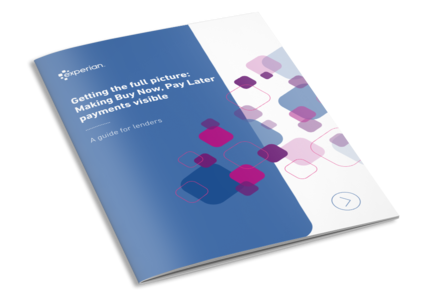Since Klarna launched in the UK in 2014, Buy Now, Pay Later (BNPL) has exploded into the consciousness of online shoppers. According to a 2021 Bain & Company survey almost half of 25 to 34-year-olds now choose to defer payments with interest free, short-term BNPL, at least some of the time.
But discussion of this explosion has often generated more heat than light. The dramatic growth of leading providers such as Klarna has demonstrated how strongly these services resonate with consumers and retailers.
The growth of BNPL has also attracted the attention of established lenders keen to capitalise on the popularity of these services, whilst also looking to minimise its impact on their existing credit services such as credit cards or personal loans.
Meanwhile, Citizens Advice has urged caution about potential risks, calling for market-wide affordability checks and clearer information at online checkouts about how repayments are set-up.
The underlying assumptions are that young people with limited incomes and transient lifestyles use BNPL, for frequent, low-value purchases as a cheap and readily available source of low-cost credit. As a result, it is often seen as a more-risky form of lending.
But are these assumptions correct?
Using data from BNPL lenders requesting soft credit checks, Experian has obtained a more detailed and comprehensive understanding of who uses BNPL and their defining features.
Our findings look somewhat different to the popular stereotypes.
- Myth 1: BNPL is used only for low-value purchases
- Myth 2: BNPL is simply an easier way to pay
- Myth 3: Only Generation Z shoppers aged 25 and below are using BNPL
- Myth 4: Users of BNPL present a high credit risk
- Myth 5: The death of the credit card – people are borrowing via BNPL instead of using other credit
- Myth 6: BNPL borrowers are especially credit hungry – they are using multiple credit products
- Myth 7: Growth in the BNPL market is exponential year-on-year
- Myth 8: BNPL repayments and defaults are now being used in credit scores

Read the whitepaper in full: "Getting the full picture: Making Buy Now, Pay Later payments visible"
Download nowMyth 1: BNPL is used only for low-value purchases
Some of it is, but not all. In fact, we found that the average purchase using BNPL was similar to that on a credit card, at £65.
95% of BNPL purchases are for items costing £180 or less. But a minority of purchases – one in 20 – exceed this amount, and some shoppers are using BNPL for items costing up to £2,000.
This diversification of spend is likely to spread as different types of BNPL services orientated around higher-value products such as holidays or furniture come to market. This gives consumers more options to spread the cost of their purchase, but also spend more and increase their exposure to debt. Understanding how the market evolves and detailed consumption of these services then becomes essential to understanding what consumers can truly afford.
Myth 2: BNPL is simply an easier way to pay
Consumers see BNPL as a simple, quick and convenient way to pay. But, as shoppers receive goods for which payment is deferred, it’s also a form of credit.
However, unlike short-term high-interest loans, BNPL credit comes at zero cost to the borrower, with some, but not all BNPL providers charging late payment fees – fueling the sense that it’s an easy way to pay rather than a loan.
BNPL providers are now sharing information on consumers’ monthly spending behaviour with Experian.
Data is shared on a reciprocal basis, which means BNPL providers can identify where consumers have multiple accounts with more than one BNPL provider. This provides a more complete view of an individual’s use of BNPL.
Other lenders, such as credit card or mortgage providers, who already contribute their data to Experian will be able to see this additional information, allowing them to make more informed credit decisions. Likewise, BNPL providers will also be able to see a consumer’s commitment to other forms of credit. The insight revealed by this reciprocal data sharing is set to become an essential part of the credit ecosystem, enabling BNPL providers and other lenders to understand an individuals’ credit risk and affordability with a greater degree of accuracy.
Myth 3: Only Generation Z shoppers aged 25 and below are using BNPL
The data doesn’t support this. Younger shoppers are slightly more represented in the data shared with Experian, but our analysis shows use of BNPL by all ages of UK consumers. BNPL is going mainstream, and its appeal is widening. Klarna reports that the average age of their customers is 35 years, and its fastest growing demographic is people aged 55+.
This ease of use and availability of these services at the point of checkout means they have a broad appeal. Klarna alone, reporting that more than 17 million UK adults have used their services at least once.
We anticipate this will grow as more customers become more familiar with benefits of BNPL, and the diversification of products continues.
Understanding the opportunities this presents to both consumers and lenders becomes critical to protecting the interests of both. Helping to facilitate access to credit and responsible management of spending, whilst also limiting risks and providing services that consumers can truly afford.

Myth 4: Users of BNPL present a high credit risk
Delinquency levels among BNPL users is currently low. Experian has observed that, in payments, some BNPL customers outperform customers who share the same credit score suggesting that these BNPL users are currently less likely to fall into arrears.
This may be because use of recurring payment or debit cards as a payment method limits consumers’ ability to default on payment, improving their credit performance. And some BNPL borrowers outperform their credit score because their score reflects them being new to credit rather than past defaults.
Nor, at the time of writing, does it look like people are using BNPL to overburden themselves with credit. Consumers are currently no more likely to default on borrowing after using BNPL than they were before.
Monitoring this behaviour will be essential to assess over the next 12 months, as inflation rises, real consumer incomes are squeezed, and the industry assesses the importance of BNPL behaviour for informing credit risk.
Myth 5: The death of the credit card – people are borrowing via BNPL instead of using other credit
BNPL spending is growing fast, but there is no evidence at present that this is at the expense of other forms of credit. Our data suggests that consumers are not abandoning their credit cards in favour of BNPL. Credit card spending is below pre-pandemic levels, but new credit-card borrowing was notably higher in the first quarter of 2022, exceeding pre-pandemic levels.
Reciprocal sharing of BNPL spending data across the credit ecosystem will allow lenders – traditional and BNPL providers – to get a more complete view of an individual’s credit commitments. Those that use BNPL along with other forms of credit are clearly visible, along with the extent of their spending. This should help lenders understand the extent of an individual’s credit consumption, to proactively manage customers and avoid over-burdening themselves with credit they can’t afford.
Myth 6: BNPL borrowers are especially credit hungry – they are using multiple credit products
BNPL users are slightly more credit active than similar credit-active audiences in the UK. However, they seem to present no more risk than other credit-active users.
Compared to the UK credit population as a whole, BNPL users may look like they consume more credit. However, this is only because some of the UK population is dormant and not credit active. Compared with those who do use their credit products, BNPL users use roughly the same number of products.
For example, more than a third of BNPL users hold more than nine other credit products – similar to what Experian has seen in the rest of the UK credit-active population.
Myth 7: Growth in the BNPL market is exponential year-on-year
The growth of BNPL has been – and remains – very strong, and we see no signs of it falling back. However, this growth is now linear rather than exponential – we do not see signs that its size will double year on year.
Myth 8: BNPL repayments and defaults are now being used in credit scores
They are not. As a result of sharing their data with Experian BNPL providers are enabling their customers to become ‘credit visible’.
Experian is keeping BNPL spending data separate from the consumer’s credit score and information on their consumption of other credit products for now but is making it available in association with their credit score if a lender wishes to see it.
For the proportion of UK consumers that have no or limited credit histories, sharing BNPL data with credit bureaux could be a way to help them build a positive credit history by evidencing their ability to manage their BNPL spending responsibly.
Takeaway message:
The characteristics of BNPL shoppers are clearly more nuanced and sophisticated than many commentators would have us believe. Sharing of repayment data by BNPL providers with Experian has demonstrated the power of combining this information with existing bureau data on consumers’ consumption of credit.
Data sharing benefits consumers and lenders, and at a time when the financial pressures on consumers are increasing the ability to see the full extent of their credit commitments is essential to helping them manage their finances responsibly.
Experian is working collaboratively with BNPL providers and the rest of UK credit ecosystem to deliver this transparency.
